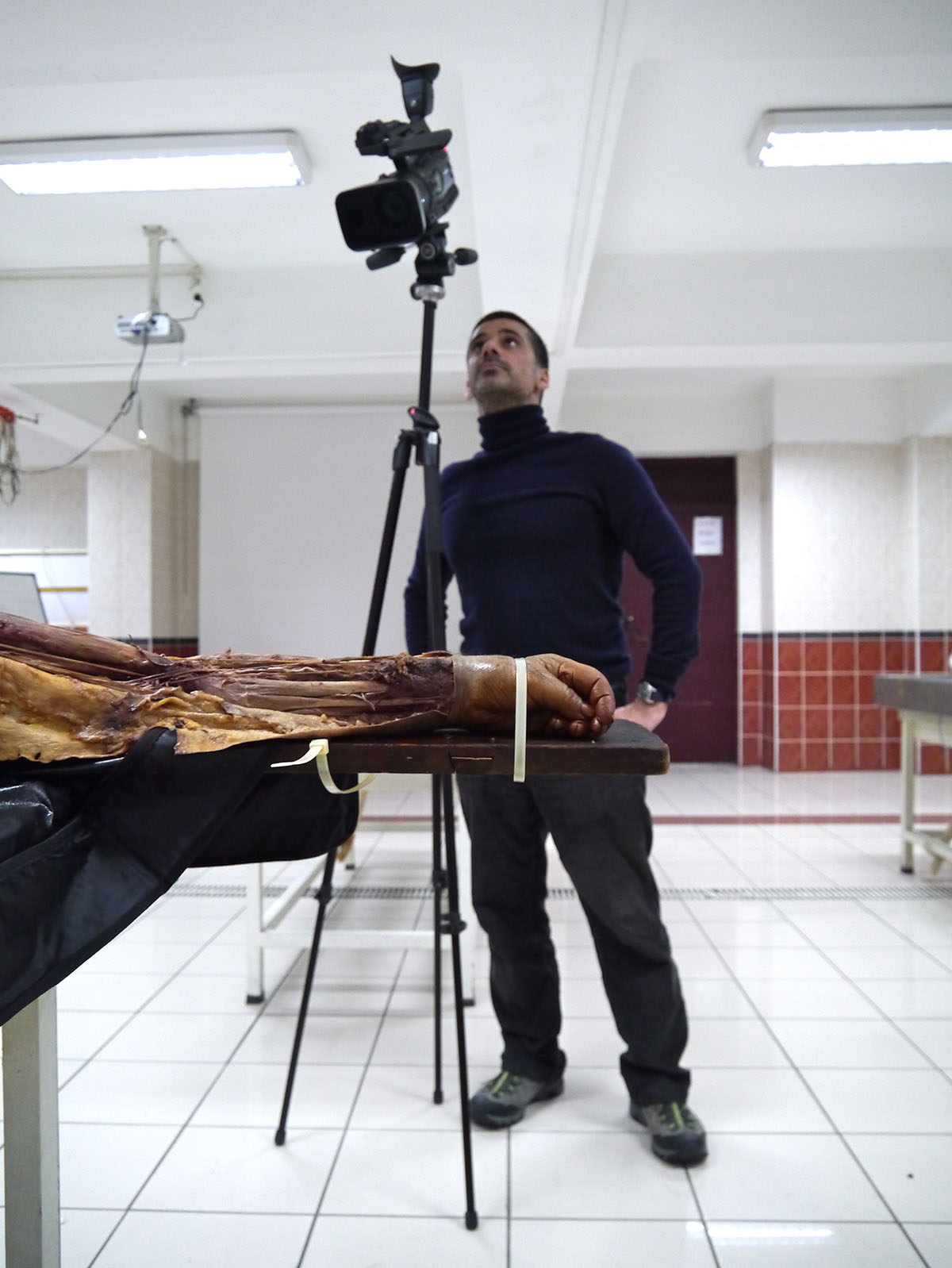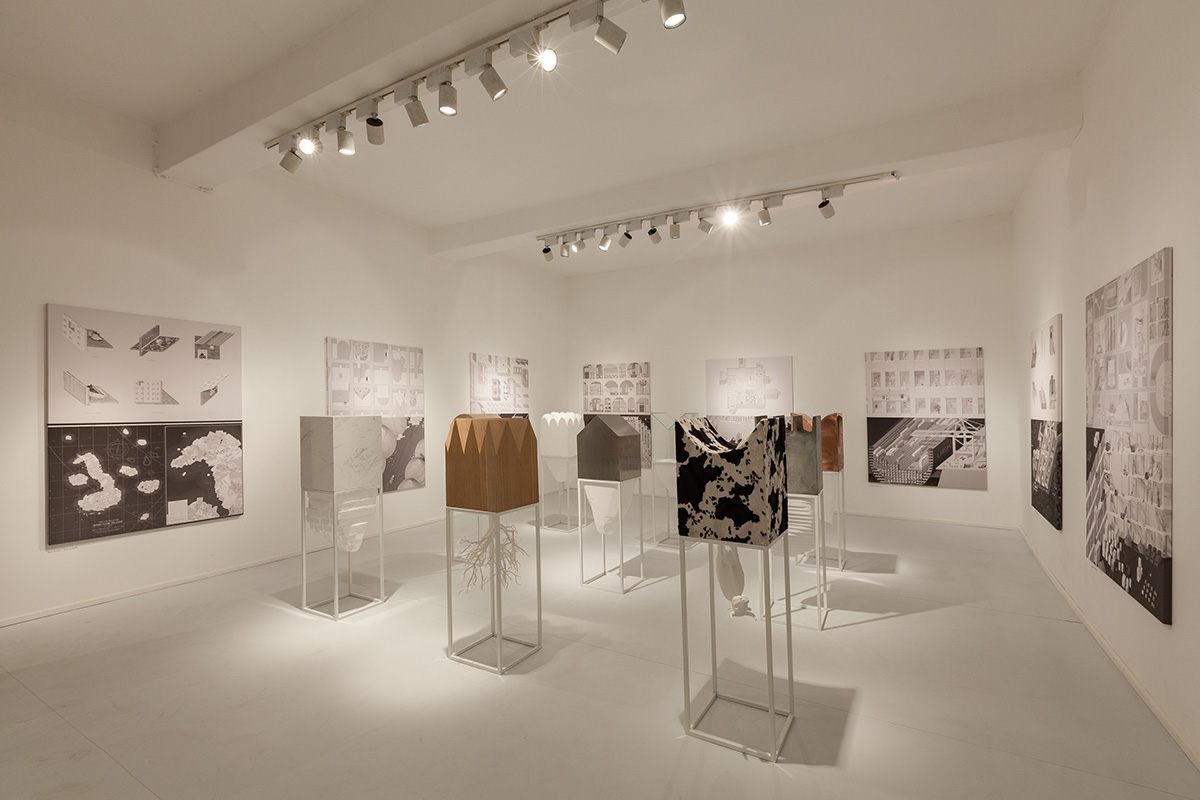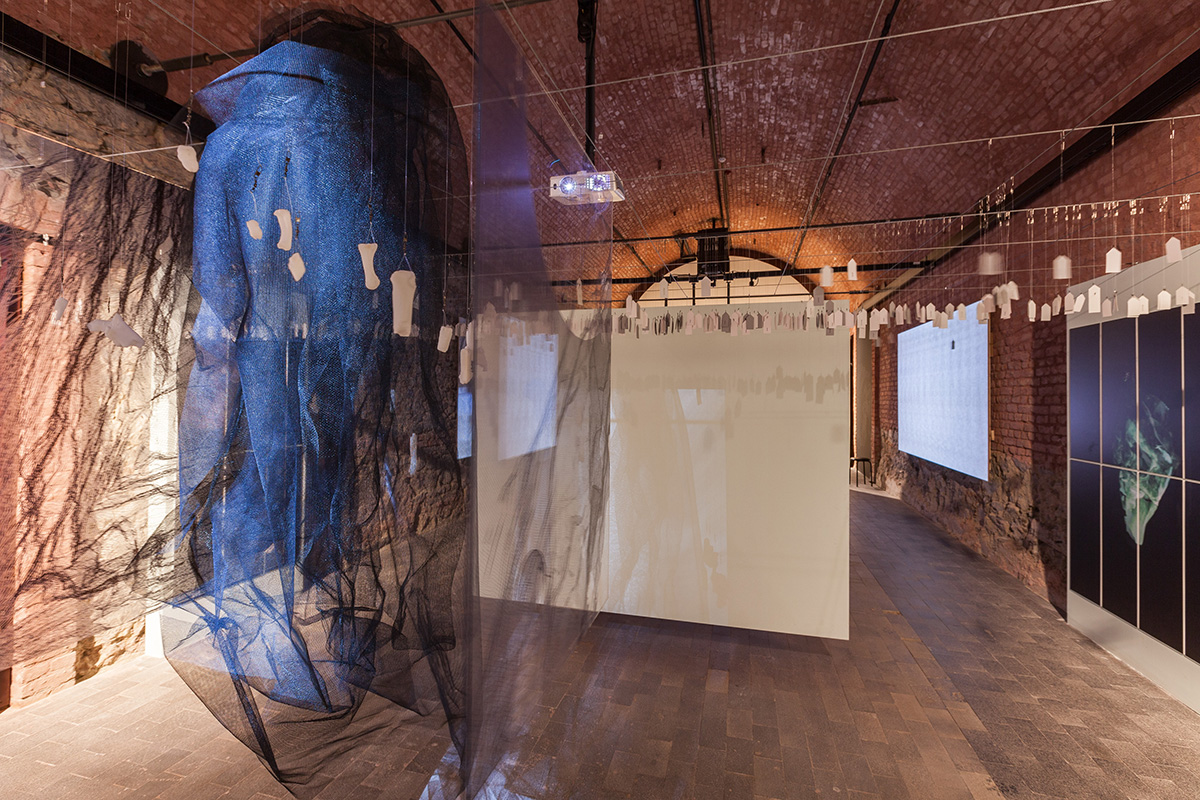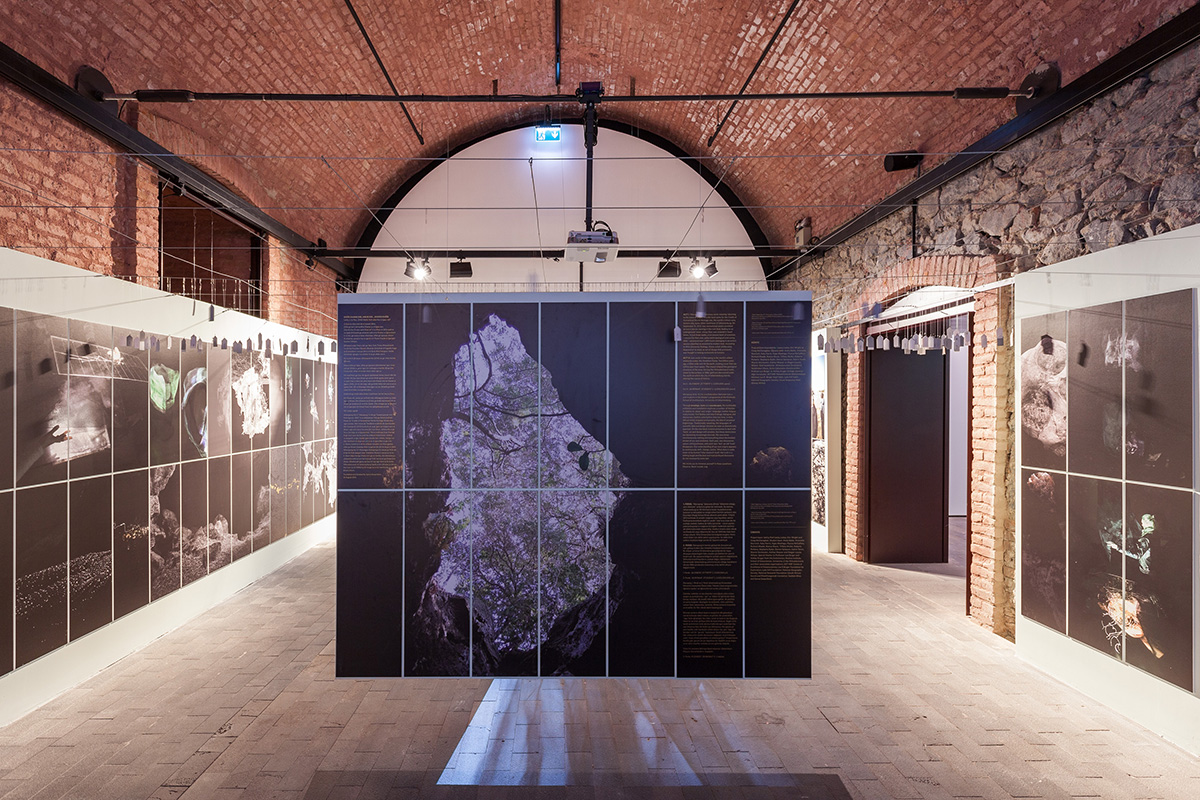Submitted by WA Contents
Top 10 Design Stories at the 3rd Istanbul Design Biennial
Turkey Architecture News - Oct 27, 2016 - 10:27 18538 views

The 3rd Istanbul Design Biennial kicked off last week with an intrinsic, requestionable and inherent theme titled as 'Are We Human', displayed at five main venues; Galata Greek Primary School, Studio-X Istanbul and Depo in Karaköy, Alt Art Space in Bomonti, and Istanbul Archaeological Museums in Sultanahmet. Curated by Beatriz Colomina and Mark Wigley, the exhibition investigates the intimate relationship between the concepts of 'design' and 'human'.
The exhibition explores multilayer aspects of design in which the human body is reshaped, (re)evolved and (re)elaborated in different forms throughout the history. This corporal show reveals how the evolution of design majorly affects our body, genetic codes, capabilities, skills and artefacts, while design is redesigning itself as a new 'geological layer' where we can not get rid of its multiple entities as the curators stated:
''We live in a time when everything is designed, from our carefully crafted individual looks and online identities, to the surrounding galaxies of personal devices, new materials, interfaces, networks, systems, infrastructures, data, chemicals, organisms, and genetic codes. The average day involves the experience of thousands of layers of design that reach to outer space but also reach deep into our bodies and brains.''
This bodily-designed exhibition's focus revolves around a set of eight interlinked propositions: 'design is always design of the human', 'the human is the designing animal', 'our species is completely suspended in endless layers of design', 'design radically expands human capability', 'design routinely constructs radical inequalities', design is even the design of neglect', 'good design' is an anesthetic', and 'design without anaesthetic asks urgent questions about our humanity'.
The Biennial's exhibition aims at rethinking design from the very beginning of humanity, and is organised in 4 overlapping “clouds” of projects: Designing the Body, Designing the Planet, Designing Life, and Designing Time.
''This biennial is an archaeological project. It is not about celebrating particular designers or about visualizing remarkable futures. It will be a multi-media documentary about the state of design today, when everyday reality has outpaced science fiction. It will place the extreme condition of contemporary design into the context of the extended 200,000 year history of our species – from the first standardized ornaments and the footprints of the first shoes to the latest digital and carbon footprints,'' said Beatriz Colomina and Mark Wigley.
The organic show of Are We Human can be seen until 20 November 2016 at the Galata Greek Primary School, Studio-X Istanbul, Depo, Alt Art Space and Istanbul Archaeological Museums. We have picked top 10 installations from the exhibition ranging from a human brain to a full-size skeleton equipped with technological devices.
Delusional Mandala by Lu Yang (China), Galata Greek Primary School

Image from Video stills, courtesy of IKSV

Image © Sahir Ugur Eren, courtesy of IKSV
Lu Yang’s Delusional Mandala, is a digitized and asexual humanoid creation that is based on herself. Lu uses her body as the starting point to the piece, and applies the neuroscientific technique of stereotactic mapping, stimulating her brain with deep brain stimulation and transcranial magnetic stimulation in order to map out her cerebral limbic system. By subjectively introducing religious imagery and thoughts revolving the physical world’s impermanence, Lu successfully induces a delusion.
Delusional Mandala is an introspection of Lu’s past, present, and future artwork and inspirations. Through the production of this delusion device, Lu simulates a comprehensive destruction of her body and work, in order to reflect upon human consciousness and the connection between that consciousness and the human brain.
For her single-channel video Delusional Mandala Yang produced, manipulated and animated an avatar of her own body in order to construct a personal mandala — a metaphysical universe for herself. In the video the artist’s digital self is subjected to a continuous series of bodily and mental operations. Delusional Mandala is characteristic of Lu’s fascination with science, biology, technology, religion and the philosophical questions of life and death.
Anatomy by Ali Kazma (Turkey), Galata Greek Primary School

Image from Video stills, courtesy of IKSV

Image © Selen Korkut, courtesy of IKSV

Image © Sahir Ugur Eren, courtesy of IKSV
Anatomy is a video shot at a medical school in Istanbul. The students are examining and learning from a cadaver under the supervision of their professor. The dead body, as has been the case for many centuries, becomes a guide and model for learning the subtleties of the various intricate systems within it. The body, stripped from layers of clothes and skin, presents itself to the professional gaze of would-be doctors who are once again touching, poking and feeling the flesh and learning from the dead.
Ali Kazma is an Istanbul based video artist. His video series titled Resistance investigates the ways in which the human body is manipulated, intervened upon, emancipated, or restricted. Part of this series, Anatomy is a single-channel video depicting an undergraduate anatomy class. A human body lies exposed on a dissection table, its arms extended to each side producing a cruciform figure. The view of the cadaver shocks then becomes familiar as the initial uneasiness gradually subsides.
Going Fluid: The Cosmetic Protocols of Gangnam, Common Accounts, Igor Bragado (Spain), Miles Gertler (Canada), Galata Greek Primary School

Alkaline hydrolysis system for human disposition. LT-28. Image © Sahir Ugur Eren, courtesy of IKSV

Going Fluid: The Cosmetic Protocols of Gangnam. Image © Sahir Ugur Eren, courtesy of IKSV

Going Fluid: The Cosmetic Protocols of Gangnam. Image © Sahir Ugur Eren, courtesy of IKSV

Going Fluid: The Cosmetic Protocols of Gangnam. Image © Sahir Ugur Eren, courtesy of IKSV
Going Fluid considers the urban implications of cosmetic operations through a close study of Seoul’s Gangam district, home to South Korea’s booming plastic surgery industry. The images of bodily modification move freely across billboards, screens and faces. In the two weeks of de-swelling following surgery bandaged patients animate the district as they browse through boutiques or sip their soups at local cafés, all living an experience that is simultaneously blogged, vlogged, shared and documented online.
Kafa by Jesse Liam McCormick and Nadir Giulio Puccinelli-Sannini, Galata Greek Primary School

Image © Sahir Ugur Eren, courtesy of IKSV
Columbia University graduates Jesse Liam McCormick and Nadir Giulio Puccinelli-Sannini have exhibited a book consisting of 1200 MRI scans, which were taken at 0.2-millimetre intervals, matching with the thickness of each page. The visitors examine the anatomy of brain's interior in the each page.
Memex by Marshmallow Laser Feast, Analog, FBFX, Duologue (United Kingdom), Galata Greek Primary School

Image from Video stills, courtesy of IKSV

Image © Sahir Ugur Eren, courtesy of IKSV

Image © Sahir Ugur Eren, courtesy of IKSV
''A 3D study of mortality exploring new photographic processes, in this case photogrammetry, this project is the beginning of a deeper study into filmmaking for the virtual reality environment… We worked with FBFX and their amazing 94-camera high resolution-scanning rig to create a full body scan of the model Beryl Nesbitt. The scans then went to MLF’s long-term VFX collaborators Analog, where they snatched a magical moment of the sunset… [that] illuminated Beryl’s scanned form. We wanted to go beyond the limits of the audience’s eyeballs, using 3D to reveal different perspectives on the human form. Obviously, the eyes are extremely important in making a 3d person look realistic, so Analog built their own layered eyes and tear ducts. Another thing they added was subtle hairs on the body,'' says MJ.
Memex is a music video for British band Duologue developed by UK-based studios Marshmallow Laser Feast, Analog, and FBFX. The protagonist of the video, an elderly female figure, appears only as a dramatically lit rendering of a 3D-scanned, physical body. Revolving close-ups, sweeping shots and “fly-overs” of the digital model evoke a feeling of estrangement. Instead of a close observation of the intimate body, the folds and creases of the wrinkled skin resemble vast landscapes.
Nine Islands: Matters Around Architecture by NEMESTUDIO, Neyran Turan & Mete Sonmez (Turkey), Galata Greek Primary School

Image © Sahir Ugur Eren, courtesy of IKSV

Image © Sahir Ugur Eren, courtesy of IKSV

Image © Sahir Ugur Eren, courtesy of IKSV
Nine Islands: Matters Around Architecture is a mixed-media installation that reflects on the temporal and geographical origins of architectural materiality. Nine “islands” constructed from lavish building materials are comprised of a top part representing an “architectural” reworking of a material, and a bottom part uncovering the way the material was sourced. Accompanied by nine drawings, these “nine Islands” call attention to both the geographical origin and the geological time that is embedded in all architectural matter.
''In the context of the new geological epoch posited by the Anthropocene, might a re-conceptualization of material, with both its geographic and geologic dimensions, bring a new conception of materiality for architecture? ‘To call human beings geological agents,’ as historian Dipesh Chakrabarty argues, ‘is to scale up our imagination of the human.’… From Timothy Morton’s ‘hyperobjects,’ which depict the environment as a compilation of immense objects — such as the polystyrene cups that will still be around after 500 years — vastly distributed in time and space relative to humans, to media theorist Jussi Parikka’s geological studies of media — which build an alternative theoretical lineage for materials, chemistry, and waste — can we consider a similar intellectual shift in our understanding of architectural materiality within a longer span of time, and a larger span of Earth?,'' said Neyran Turan.
Portable Person by Studio Works (USA), Galata Greek Primary School

Original, tiled X-ray visualisation of the Portable Person with wearable paraphernalia, 1973. Image courtesy of Robert Mangurian and Jeffrey Hannigan, IKSV

Image © Sahir Ugur Eren, courtesy of IKSV
Portable Person is a life-sized, X-ray collage of a figure wearing an array of technological prostheses that include cameras, antennas, microphones, fuel cells, food packs, brain sensors, information indicators, and medical sensors, among others. S/he also appears to wear a phone system, ten years before the first commercial cell phone became available. Portable Person was partly inspired by the first portable cassette recorders and was first revealed at the 1973 exhibition Portable World in New York.
''Portable Person is a vision of a future mobile, life-supported earth inhabitant outfitted with a technologically inspired extension of the body. Envisioned in 1973, these extensions responded to common human needs, the environment of the city and emergent and latent technologies. Conceived of at Studio Works in New York… by Robert Mangurian and Jeffery Hannigan, Portable Person has proved prophetic in many of the devices and inventions that s/he wears… If Portable Person… relies on wearables, or external paraphernalia, the portable person of today would, and does to some extent, make use of implants, genetic modifications, and more integrated tactics. But as designers, we will continue to have open to us the choices of how integrated these technologies become merged with our biological beings — in other words, to what extent do we truly become the cyborg,'' said Robert Mangurian and Jeffrey Hannigan.
The Hand: The Whole Man in Miniature by Madelon Vriesendrop (Netherlands), Galata Greek Primary School

Image © Sahir Ugur Eren, courtesy of IKSV
Madelon Vriesendorp’s mixed-media installation The Hand is part her larger investigation of the human body. Here she interprets the human hand not only as a structural anatomy, but also as a “thinking organ,” symbol, gesture, and conceptual tool. Known for her vast collections of figurines and tchotchkes of human body parts, Vriesendorp looks at the hand as a metaphor for giving, taking, controlling, punishing, and rewarding.
''The hand is perhaps the most emotive part of our body. It is our ultimate vessel for communicating meaning. Our hands are unique to our species, ‘humanique,’ in that we have opposable thumbs. They allow us to use tools with great ease, which engenders in us the ability to experiment and form creative ideas of how to use those tools and to explore abstractly, to think abstractly and symbolise, and mix different combinations of ideas ‘promiscuously’ together beyond the objects we are manipulating… In palmistry the hand is a map for reading the pattern of one’s life and of one’s psyche… The hand communicates for us, encoding cultural and primordial dialogue. …Our hands are not the obedient servants of our minds, but rather reciprocal sources of ideas and creativity,'' said Madelon Vriesendorp.
The Unstable Object (II) by Daniel Eisenberg (USA), Galata Greek Primary School

Image © Sahir Ugur Eren, courtesy of IKSV

Image © Sahir Ugur Eren, courtesy of IKSV
Daniel Eisenberg’s three-channel installation The Unstable Object (II) is part of a long-term project that interrogates the conditions, forces and ethics that surround labor in factories around the world. In this film, Eisenberg reveals the labor embedded in the production of human prosthetics that range from simple hands, arms, feet and legs to complex electro-mechanical and neuroprosthetics. Even if mass-produced, all factory-made prosthetics are unique, as each needs to be eventually fitted to an individual owner.
''The Unstable Object (II) [portrays] the Duderstadt facility of Ottobock, a German prosthetics company… There, thousands of prosthetic hands, feet, arms, and legs are produced daily for the global market, from wooden feet to microprocessor-controlled knees… In this factory, an arc can be mapped from extremely repetitive, relatively low-skill tasks, all the way to highly artisanal, creative craftsmanship and advanced technical expertise. This installation briefly sketches several kinds of labor found in the factory and traces the movement from mass production to individualized object. These prosthetics are often designed to be as invisible as possible, but what remains most unseen and unspoken of about them are the causes for their proliferation: land mines, wars, terrorist incidents, industrial and vehicular accidents, and medically necessary amputations, all of which multiply annually, to make prosthetics a reliable growth industry,'' said Daniel Eisenberg.
Maropeng Acts I & II by Lesley Lokko (Ghana), Alt Art Space

Image © Sahir Ugur Eren, courtesy of IKSV

Image © Sahir Ugur Eren, courtesy of IKSV

Image © Sahir Ugur Eren, courtesy of IKSV
Maropeng Acts I & II is a series of visual essays on the origins of species, time, place and scale prompted by two South African locations in close proximity: the paleoanthropological site known as “Cradle of Humankind” and the largest verified impact crater on Earth, the Vredefort Dome. “Maropeng,” a word in the indigenous Setswana language meaning “returning to the place of origin,” is mobilized to invent new geological and geographical narratives on the beginnings of humanity.
''Fifty miles to the north of Johannesburg lies the Cradle of Humankind, a scattering of limestone caves that contain the world’s largest trove of hominim fossils, man’s earliest ancestors. Two years ago, anthropologists assigned the genus Homo to skeletons that were discovered in a remote underground ‘room’ in the Rising Star cave system, giving us fresh insights into the origins of our species. Seventy miles in the opposite direction lies the Vredefort Dome, a scar in the earth’s surface caused by a 10 km wide meteor that crashed into the earth two billion years ago. The impact altered the geological structure of the area, which, in turn led to the discovery of gold two hundred years ago. Johannesburg was born. Within two decades, the city housed 100,000 inhabitants,'' said Lesley Lokko.
Top image: Delusional Mandala by Lu Yang (China), Galata Greek Primary School. Image from Video stills, courtesy of IKSV
> via Are We Human?
